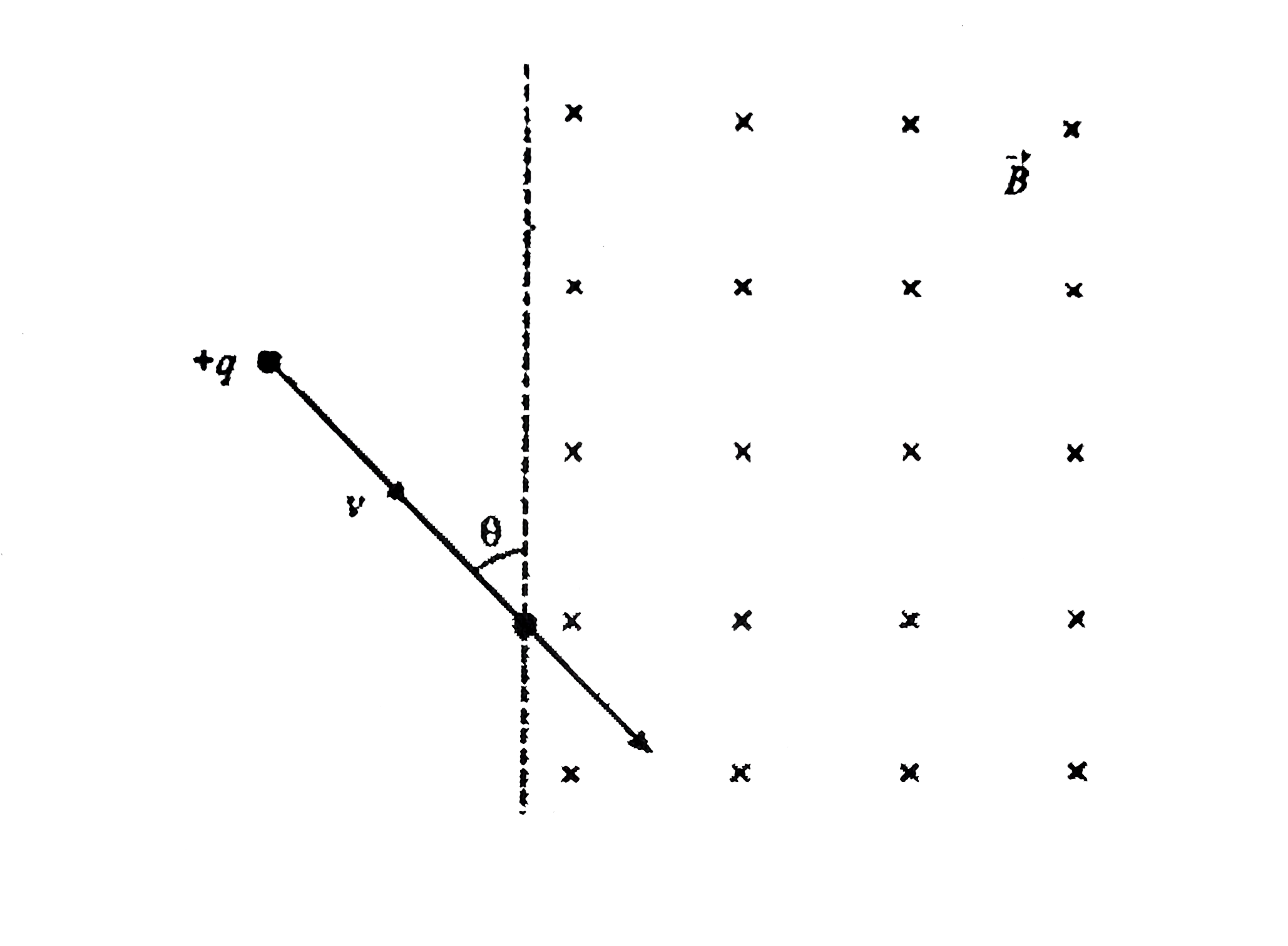A charge particle of 2μC accelerated by a potential difference of 100V enters a region of uniform magnetic field of magnitude 4mT at right angle to the direction of field.The charge particle completes semicircle of radius 3cm inside magnetic field.The mass of the charge particle is _________×10−18 kg
To find the mass of the charged particle, we can follow these steps:
Step 1: Calculate the kinetic energy gained by the charged particle
The work done on the charged particle when it is accelerated through a potential difference (V) is equal to the change in kinetic energy (KE). This can be expressed as:
W=qV=ΔKE
Where:
- q=2μC=2×10−6C
- V=100V
Substituting the values:
W=(2×10−6)×(100)=2×10−4J
Step 2: Relate work done to kinetic energy
The kinetic energy can also be expressed as:
KE=12mv2
Setting the two expressions for work equal gives:
2×10−4=12mv2
Step 3: Rearranging for velocity
Rearranging the equation to solve for v2:
mv2=4×10−4
Step 4: Use the radius of the semicircle
The radius r of the semicircle is given by the formula for the radius of a charged particle moving in a magnetic field:
r=mvqB
Where:
- r=3cm=3×10−2m
- q=2×10−6C
- B=4mT=4×10−3T
Step 5: Rearranging for mass
Rearranging the radius formula to solve for m:
m=rqBv
Step 6: Substitute v from previous steps
From the kinetic energy equation, we have:
v=√4×10−4m
Substituting this into the mass equation gives:
m=(3×10−2)(2×10−6)(4×10−3)√4×10−4m
Step 7: Simplifying
Squaring both sides to eliminate the square root:
m2=(3×10−2)(2×10−6)(4×10−3)24×10−4
Calculating the right-hand side:
m2=(3×10−2)(2×10−6)(16×10−6)4×10−4=96×10−144×10−4=24×10−10=2.4×10−9
Taking the square root:
m=√2.4×10−9=1.55×10−5kg
Step 8: Final Answer
To express the mass in the required format:
m=1.55×10−5kg=155×10−18kg
Thus, the mass of the charged particle is:
Mass=144×10−18kg
The work done on the charged particle when it is accelerated through a potential difference (V) is equal to the change in kinetic energy (KE). This can be expressed as:
- q=2μC=2×10−6C
- V=100V
The kinetic energy can also be expressed as:
Rearranging the equation to solve for v2:
The radius r of the semicircle is given by the formula for the radius of a charged particle moving in a magnetic field:
- r=3cm=3×10−2m
- q=2×10−6C
- B=4mT=4×10−3T
Rearranging the radius formula to solve for m:
From the kinetic energy equation, we have:
Squaring both sides to eliminate the square root:
To express the mass in the required format:
Topper's Solved these Questions
Similar Questions
A charged particle enters a region of uniform magnetic field at an angle of 85∘ to the magnetic line of force . The path of the particle is a circle .
View SolutionA charge particle of mass m and charge q is accelerated by a potential difference V volt. It enters in a region of uniform magnetic field Bas shown in figure-4.93. Find the time after which it will come out from the magnetic field.

View Solution
Knowledge Check
A charge particle after being accelerated through a potential difference V enters in a uniform magnetic field and moves in a circle of radius r. If V is doubled, the radius of the circle will become
A2rB√2rC4 rDr√2A proton and an α particle accelerated through the same potential difference enter a region of uniform magnetic field normally if the radius of the proton orbit is 10 cm ten radius of α particle is
A10cmB10√2cmC20cmD5√2cmA charged particle of mass m and charge q is accelerated through a potential differences of V volts. It enters of uniform magnetic field B which is directed perpendicular to the direction of motion of the particle. The particle will move on a circular path of radius
A(√Vm2qB2)B2VmqB2C√2Vmq(1B)D√Vmq(qB)
A charged particle of mass m and charge q is accelerated through a potential difference of V volts. It enters a region of uniform magnetic field which is directed perpendicular to the direction of motion of the particle. Find the radius of circular path moved by the particle in magnetic field.
View SolutionA particle of mass m and charge q moving with velocity v enters the region of uniform magnetic field at right angle to the direction of its motion. How does its kinetic energy get affected?
View SolutionA charged particle enters a region of uniform magnetic field at an angle of 85∘ to the magnetic line of force. The path of the particle is a circle. Is this statement true or false?
View SolutionA particle of mass m carrying charge q is accelerated by a potential difference V. It enters perpendicularly in a region of uniform magnetic field B and executes circular arc of radius R, then qm equals
View SolutionIf a charged particle enters perpendicular in the uniform magnetic field then
View Solution
